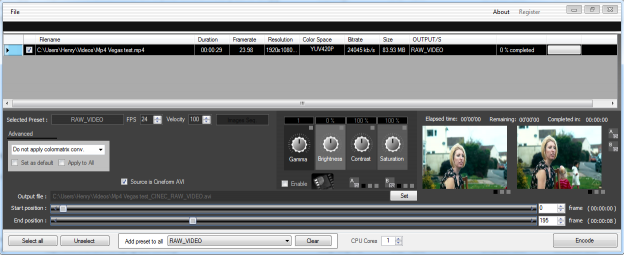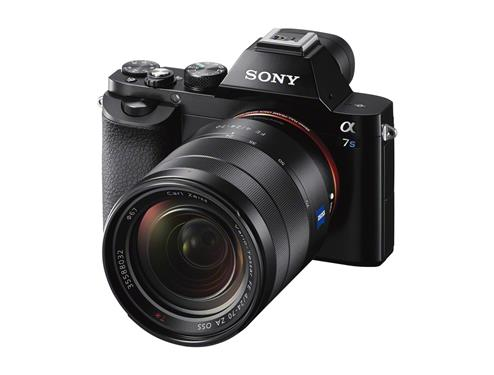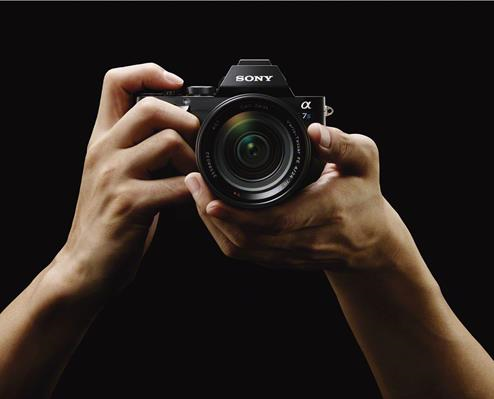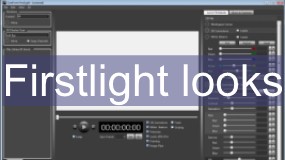
Todays blog post is about an innovative company called Cinemartin based in Spain and I admire what they have achieved.
It’s not often that I come across a product that I feel so strongly about that I blog about it. As I have made clear on my blog before, we live in exciting times. With Nebula in the world of audio creating extraordinary tones and affordable Cinema DNG in the world of Video we have reached a time when independents can produce quality that is technically on par with what professionals produce. The rest is all to do with skill and artistic vision.
I am in the final throes of completing my second album and have turned my attention to Video. A few weeks ago I bought a Blackmagic Design Pocket Cinema Camera. It has been quite an eye opener. I never realised how good near uncompressed video can look. I have been shooting all my tests using the compressed Cinema DNG files that this little camera spits out and converted to Cineform RAW the files have beautiful colour rendition. Not a hint of the digital flatness that comes from other manufacturers. Don’t get me wrong, Blackmagic design have their fair share of issues with moiré, aliasing and quality control but when they get it right, the image is spectacular. I also use the BMPCC on my old, dated but trustworthy Shoot35 SGblade. I have done a few gigs with this combo and I always come away impressed how the blade adds a thickness to the digital captures I have made over the years. First with a Canon HFS11 and now with the BMPCC. I used to capture to a Nanoflash but the RAW files are superior in every way. Is it flawless, far from it but it sure puts out an image with tonnes of character. I like a rich colourful image that isn’t harsh or plastic looking in any way but that has enough resolution to hold up on a full HD home theatre TV. You see I am aiming for web distribution so it needs to look good for that and besides, I will be the face on camera and I don’t have a make up artist – so I have to make myself palatable he he he.
So I have made a few tests along the way VIMEO PAGE check the most recent ones. Early tests are very promising and offer a myriad of tones hues and colours and I have made great headway with my workflow – but one thing remains. A codec to master with. Cineform grading in Gopro studio is incredible with the use of 3D luts but what happens when/if I ever wish to send my files to someone who works on a MAC and I need to burn the colours in but at high quality – say perhaps a colour grader? I thought about this the other day and realised that it is not simple to encode to Prores on a PC. Cineform is my codec of choice for editing but probably not for sharing material even thought it is cross platform – it seems that most of the post production whole world is MAC based and Prores rules. Final masters also need to be compressed with high quality algorithms to preserve fine detail. One way I know is to export out of Vegas using smart rendering back to Cineform. I have also tried uncompressed YUV and it is incredible. With Cineform no recompression occurs unless you add text, fx, dissolves etc. But my test master exports to really lossy codecs for distribution have been disappointing. I have always found my exports to Mp4 out of Sony Vegas 11 below Par. I have settled with Microsoft Expression encoder for the most part to do my master file encoding to Mp4. It just preserves so much more detail but it has reached end of life and offers few codecs output options. But is there one piece of software that can rule them all and give hardware encoders a real run?

Having been a an active user on DVXuser for a few years now I came across an intriguing post about an encoder that could encode from just about any codec into a handful of industry standard codecs. It is a company called Cinemartin and the thread that caught my eye is here DVXuser thread about Cinemartin.

To be honest I didn’t know what the fuss was about until I was faced with the dilemma and thought about it and dug deeper. You know how sometimes you just breeze past a news announcement or a forum post for weeks until you bother to click on it. But as I started to work with RAW files and desired to preserve the fidelity all the way through to mastering, I realised I needed a good encoder to replace Expression that could deal with multiple file inputs and outputs using high quality visually lossless compressed codecs. Enter Cinemartin Cinec 3X. The top tier product is capable of converting almost any codec into DPX, Prores – up to 4444, H264 up to H444 MP4, H265, Avid DNxHD, XDCAM HD50 and Quicktime Animation. Two Codecs stand out immediately – Prores on a PC!!!!! and H265. Apparently this is the next generation codec that can preserve quality in tiny file sizes. Check Andrew’s post about it here . It may just drive the uptake of 4K by keeping high quality video fairly light on resources while allowing high bit depths. This truly is a big deal for anyone wishing to spread their files without choking on bandwidth on uploads or downloads. I shall be selling my music and short films hopefully through my own website and also on Vimeo and cutting file sizes in half for similar quality as h264 is extra ordinary.
So on the 2nd of April I proceeded to their site browsed around, checked some demo encodes and ordered the Pro version which worked out to about 199 Euros. The entry level was just a bit too lite for me but to be fair you won’t buy the pro version unless you wish to do this properly as it is a serious investment. As a Cineform Power user the omission of Cineform input in the entry level turned me off right away. I must at this point state that Cinec can convert directly from the Compressed DNG that the BMPCC produces into any target codecs but I do not wish to use a Davinci workflow and prefer to work with Cineform RAW video. A Cineform workflow has so many advantages such as the ability to use the files in any NLE while applying 3D luts and colour correction in realtime and a very straight forward learning curve. It is simply superb and sort of turns Speedgrade Onset into a fully fledged Speedgrade Suite ( with some exceptions ). After purchasing the product I had to wait for a few hours while the support guys got my license to me. Strangely, the trial version won’t accept Cineform and a few of the other high end codecs so I couldn’t really trial it as I would have liked. I suggest that the guys at Cinemartin review this as it is important that you have the chance to trial things before a solid purchase. Perhaps a way to allow the loading of files but with encodes having a watermark. There are a few ways to do it perhaps but I am no software guru. It would have saved a few gripes for me along the way. Never the less the license was sent to me by morning the next day ( I had ordered after hours ) and instructions were included with the download. I discovered that the download that I was given to download after passing the Paypal procedure is an old installer so I had to uninstall that version and install the new version which does not work without the license key. As a third party developer for Acustica Audio’s Nebula who has seen my work pirated I am pleased to say that the copy protection is not too intrusive and is the standard computer ID challenge and response. You send them your machine ID, Full name and e-mail address, agree to use the software on one computer ( unless you have a multiple license of course ) and they send you a longish code that you can copy and paste into the program. Once the registration is successful, the register button becomes greyed out.
Now off to work. The software is fairly straight forward in use. So simple it is almost idiot proof. Seriuously……almost
Here are some tutorials but in short – You select a file, ( drag and drop or using the open dialogue ) choose a destination codec preset and press encode. Hah. That’s it – wait a while and check your results. As far as tweaks to clips, there are a few basic adjsutments that one can make to gamma, brightness, contrast and saturation of clips. One of the coolest features is the ability to render using start in and out points. In other words you can shorten clips as you would in a NLE by dragging a couple of markers. So well thought out. The abilty to add a colour matrix is included and an A/B switching function as well. On the whole a solid piece of software that delivers in it’s chosen niche. Of course the most important feature is the batch processing of numerous files.
The Gold version allows the use of up to 6 CPU cores when doing encoding. In practice however, I found the pro version used all my cores to the max when encoding to H264 even though it should have a 2 core limit so perhaps the encoder leverages CPU cores depending on certain codecs and whether the cores can be shut down or not. I don’t know, unless you encode video professionally and require high end output in double time with deeper features, the Pro version will suite most people. If however you own, RED wish to use DPX as an input then all bets are off. You may feel you need Prores to make your clients workflow easier. One of the reasons the Alexa camera is revered so much is the direct to edit friendly Prores. And this tiny piece of software may help RED a little easier to handle on the post side I suspect. Of course RED could come out with a Prores 4444 module( it has been resisted in the past ) or one can record to an off body Prores recorder like the convergent design offerings but the strength or RED is raw – strangely it is also it’s Achilles heel.
In the interests of transparency, there are a few quirks here and there and I wish the software had a few deeper settings – at least the Pro version. It does need the ability to tweak the presets at least a little one feels. I understand where these guys are coming from and applaud them highly because the Mp4 that I produced was the best Mp4 I have ever made!!!!!! If you go ahead and download this short test clip from Vimeo – please login and download the original HD 1920 X 1080p file you will see what I mean. Now the file is using a deapth of field adaptor which adds the grain and it was so close to the original it was scary. Granted, one will never encode to such a high bit rate ( 7.5 MB/s ) but when one desires to preserve quality it is incredible. Perhaps great for rushes and client demos.
I was using the h264 HQ preset which I assume uses a very high H264 profile and it shows. Very high bit rate that played quite efficiently on my workstation, the grain preserved perfectly and boy did it look incredible compared to the Sony Vegas AVC version. This allows for master quality deliverables in an MP4 container for efficiency. I haven’t tried out H265 yet but from what I have seen I am sure it will be even more amazing. I had previously attempted to use free x264 tools that are nothing but magnificent such as Handbrake and Staxrip but they can be overwhelming and a bit annoying to use with Cineform RAW. Get this file, download that codec, set this parameter ahhhh forget it. I am not a software techy- I just want to encode my file simply to great quality. It was refreshing to have one piece of software that just worked in a simple way. But despite that, although the simplicity of Cinec is welcome, I suspect that the ability to tweak a little deeper will be welcomed by some, myself included.
I have to say that within hours of playing with the software I fell in love with it. I exchanged about 27 e-mails with the support guys trying to make suggestions as to how they could improve the software. There is no manual to reference as the software is so simple but I made many suggestions that I hope they may implement. Some minor things such as the addition of a pause or stop button. Deeper encoder settings in the Pro version, the ability to have job queues. This is because some files ( mainly lossy codecs ) need to be encoded to uncompressed first before being encoded to the destination format and this has to be done manually. I see no reason why a job queue preset could not handle that in the background. For example to go from Cineform RAW to H264 MP4 would require a few steps. Encode to Video RAW – with the ‘file is cineform’ box ticked. Delete file from program with delete button – import new file – untick Cineform box – encode to Mp4. It would be nice if the software handles this even if in the background. I admit that the times I would want to do this are slim but I can see some cases where it may be useful. Apparently one can convert from Cineform RAW directly into H265 in just one step but at the time of writing I did not have the facility to try this.
I found a few bugs and anomalies as well with regards to Cineform RAW but they are looking at it as we speak. Audio and frame rate issues but nothing that cannot be sorted with updates. Most other codecs performed flawlessly.
The developers seemed responsive and attentive to my suggestions and I have offered to become a beta tester for them as I really believe that this software is a must have for the next high resolution generation of cameras. They have agreed and will allow me to have access to their higher end software and may review it in time as compared to the Pro version I bought. I am not sure whether I wish to get a GH4 yet. I have pre-ordered one but am still on the fence as I really would love access to uncompressed 4k – not sure how feasible that is from a cost perspective. Anyhow – I made the suggestion to these guys to consider creating a super sampled HD version from the 4k 4:2:0 files and they may look at it. Not sure if it will give any benefit but we can only wait and see.
Few things are perfect in this world but if you wish to produce Prores files on a PC or encode to the most excellent H264 or even H265 – I think that on a PC there aren’t too many options that are as simple, effective and produce undeniably incredible quality. I think I have just found my favourite utility for encoding purposes. I believe that Vimeo accepts certain flavours of Prores files now for superb encodes as well as Youtube. So if you want to provide the best possible viewing experience for your viewers – you may have just stumbled upon it – it’s called Cinemartin Cinec 3X
Kind regards
Henry
Cineform converter
Convert from Cineform to Prores
Convert Cineform to H265, cineform to mp4
video converter
Filed under: Filmmaking by admin
No Comments »







